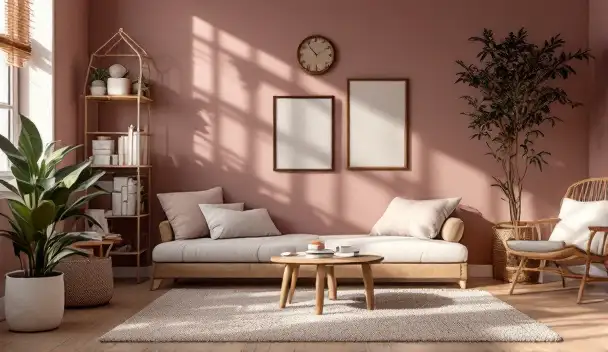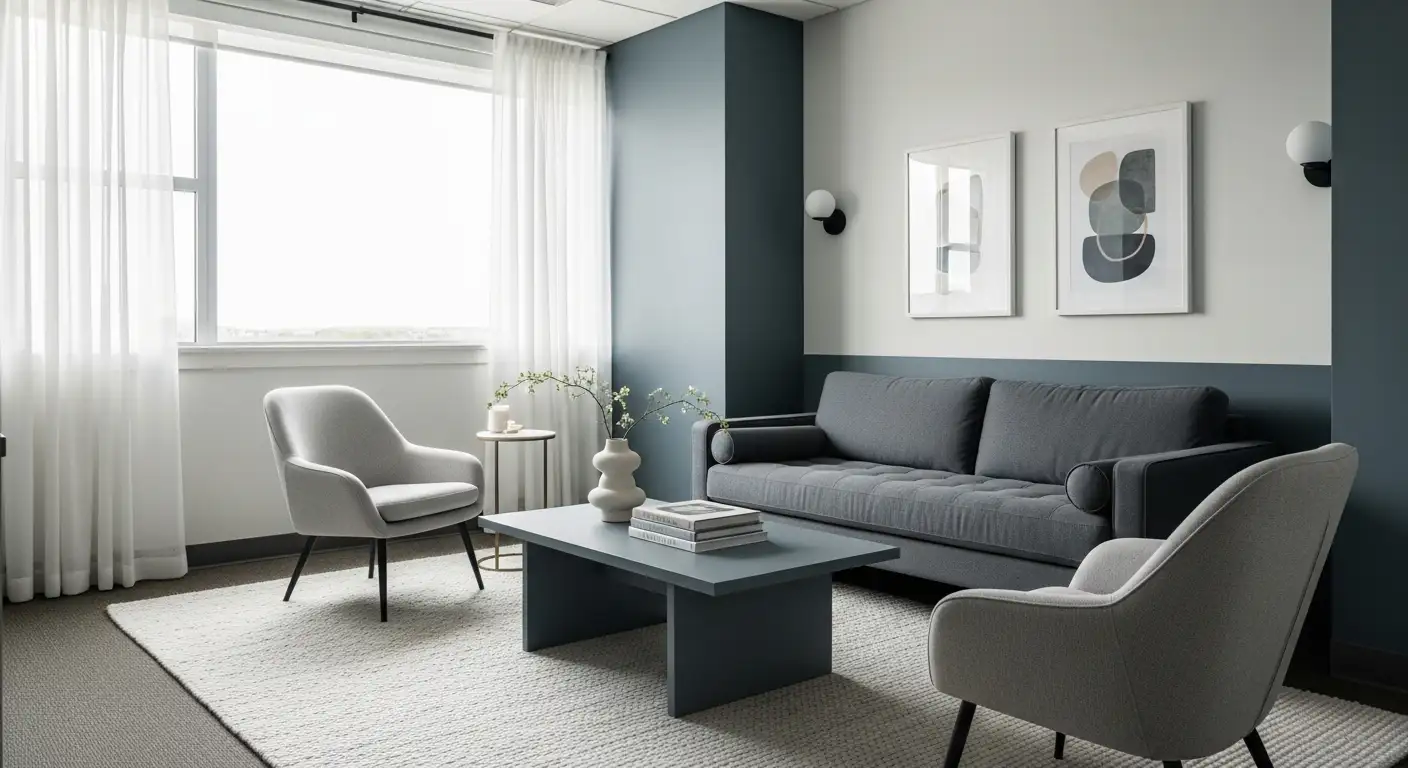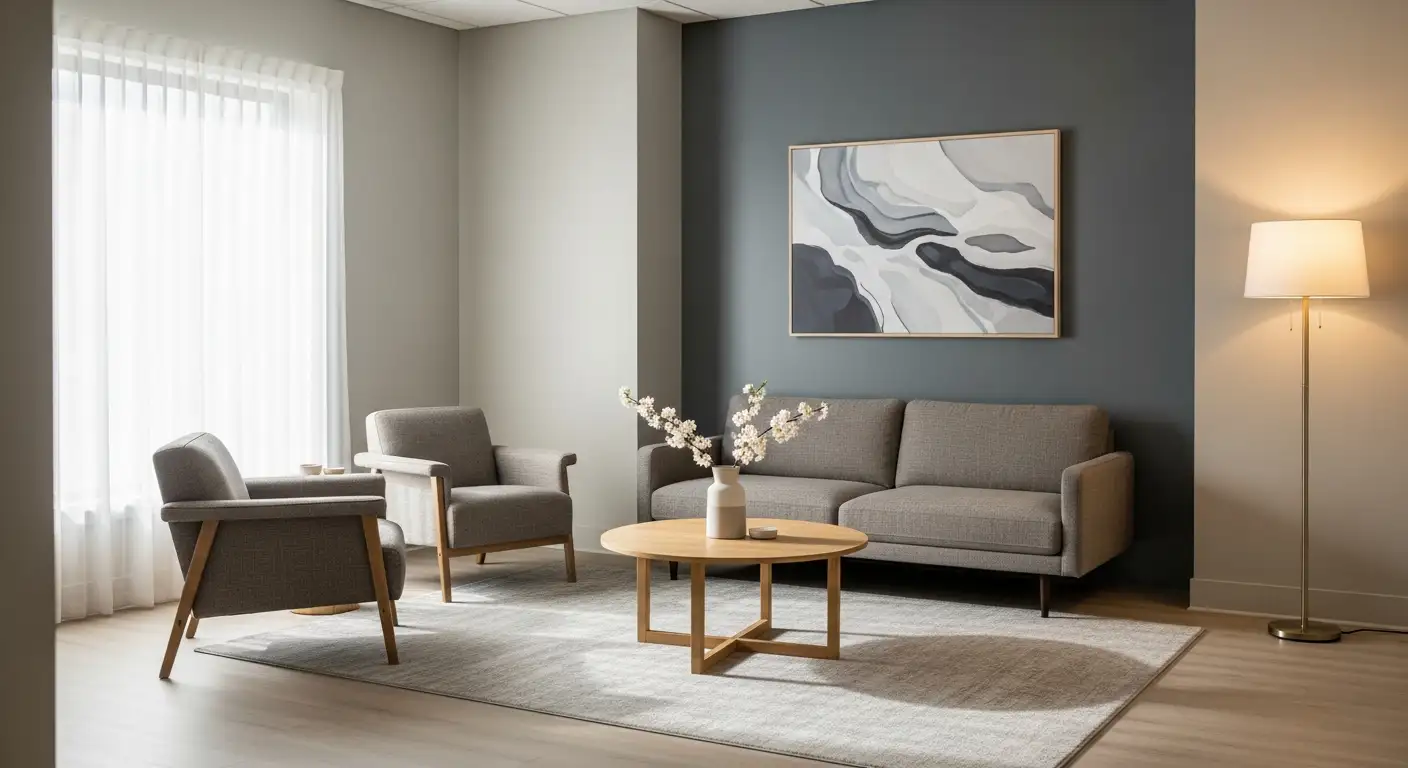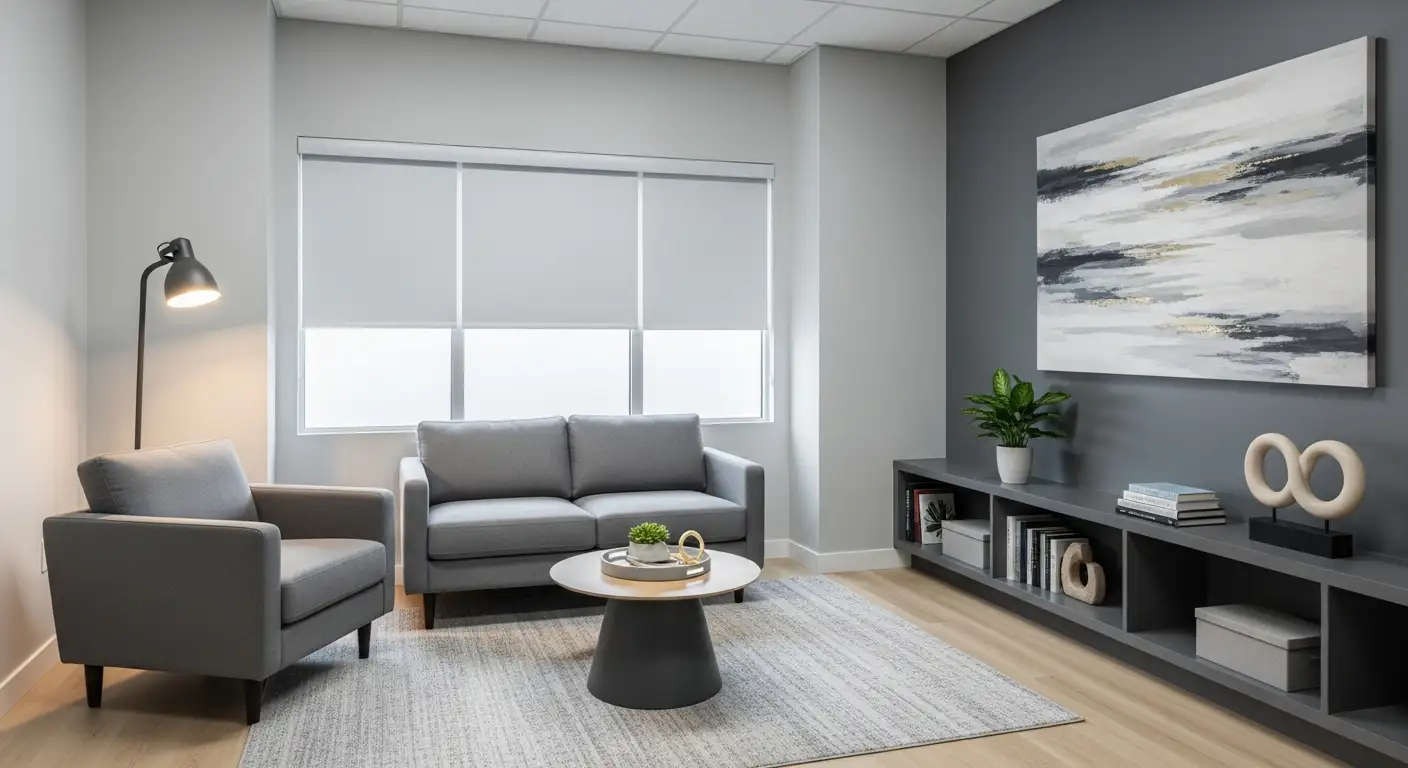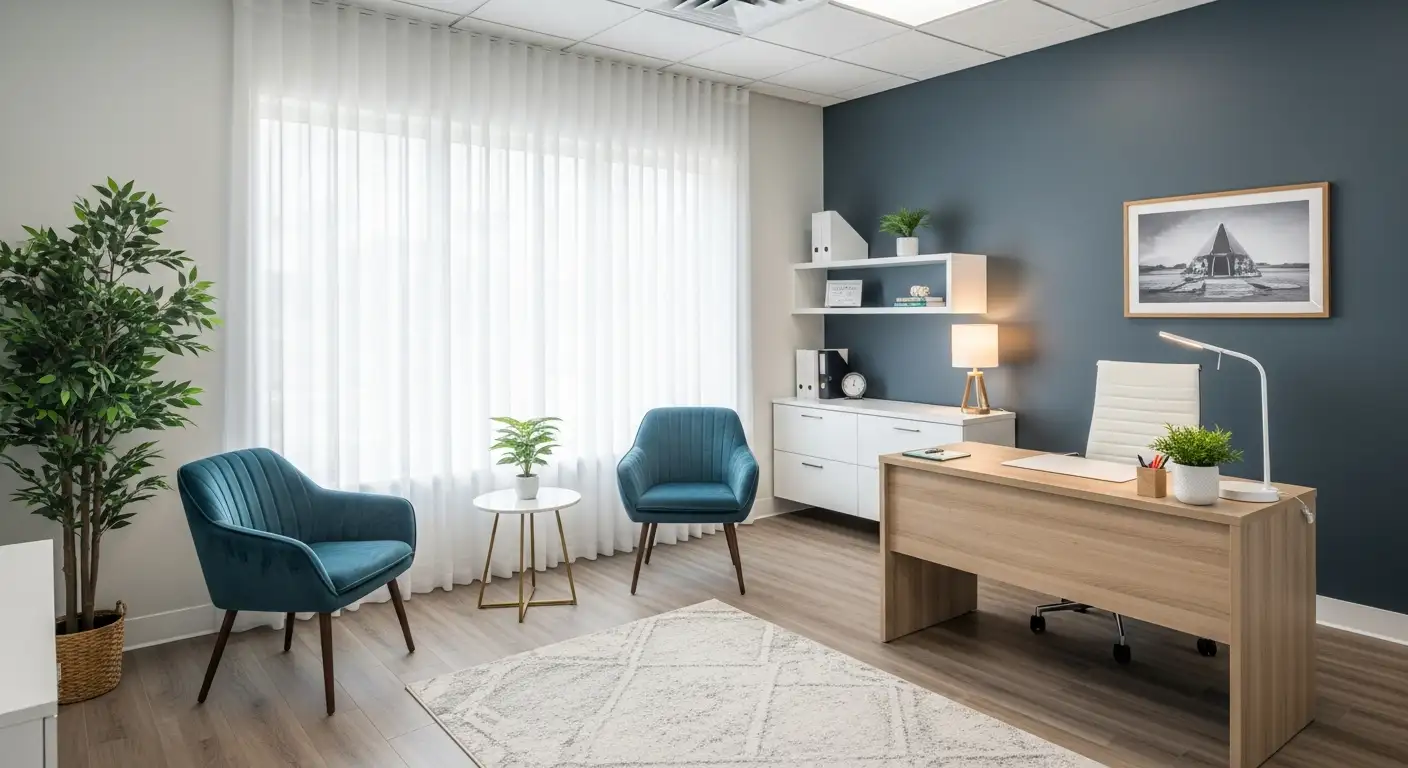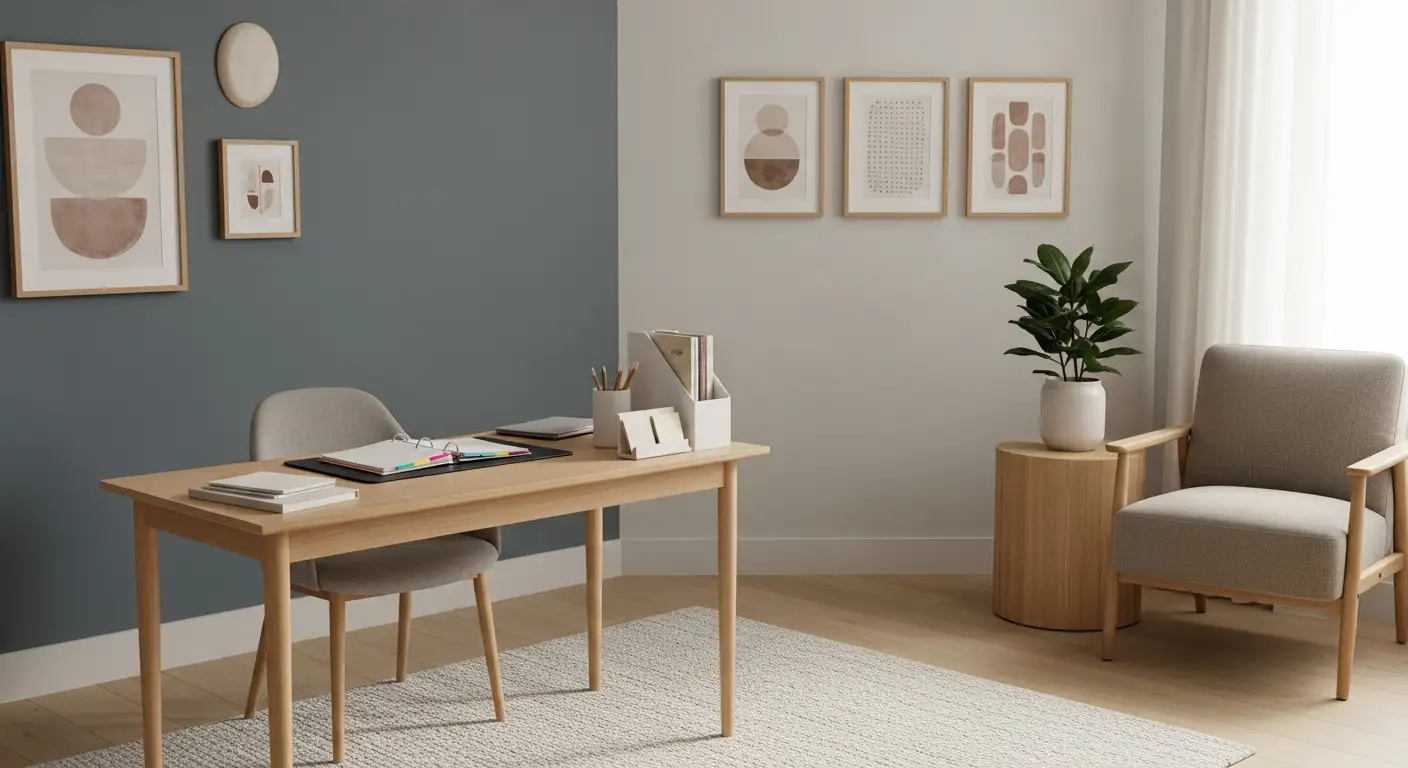Setting the Stage for ABA Success at Home
Successfully implementing Applied Behavior Analysis (ABA) therapy at home requires a well-structured, engaging, and safe environment. The right setup not only supports learning and development but also enhances your child's comfort and motivation. This article offers comprehensive tips on how to establish an optimal home environment that facilitates effective ABA therapy, fostering progress and confidence in your child.
Designate a Specific, Organized Therapy Space
 Creating a dedicated space for ABA therapy at home is crucial for establishing a consistent and effective learning environment. Choose a quiet corner or small room that is free from high traffic and distractions. This space should be well-lit, ventilated, and maintained at a comfortable temperature to promote focus and comfort.
Creating a dedicated space for ABA therapy at home is crucial for establishing a consistent and effective learning environment. Choose a quiet corner or small room that is free from high traffic and distractions. This space should be well-lit, ventilated, and maintained at a comfortable temperature to promote focus and comfort.
Organize toys, books, and learning tools neatly and accessibly. Using storage bins, shelves, or baskets helps keep materials orderly, allowing your child to quickly find and engage with the resources. Visual supports like schedules, reward charts, or picture cards placed visibly in the area clarify expectations and motivate participation.
A calming environment encourages positive engagement. Consider soft lighting, minimal background noise, and sensory-friendly features like calm-colored walls or sensory tools tailored to your child's preferences. These adjustments can help reduce anxiety and create a welcoming atmosphere. Remember, consistency in the setup and organization of this space supports your child's understanding and makes sessions smoother.
By establishing a designated, organized therapy zone, you provide your child a secure and motivating environment that enhances their learning journey within ABA therapy.
Implement Consistent Routines with Visual Supports
 Establishing daily routines that include therapy sessions, playtime, and rest proves vital in creating a stable environment conducive to ABA therapy success. Consistency helps children anticipate what comes next, reducing anxiety and making transitions smoother.
Establishing daily routines that include therapy sessions, playtime, and rest proves vital in creating a stable environment conducive to ABA therapy success. Consistency helps children anticipate what comes next, reducing anxiety and making transitions smoother.
Start by creating visual schedules that depict daily activities using pictures, charts, or written words. These schedules serve as visual cues, guiding your child through the day and reinforcing understanding. Incorporating timers can also help signal when a task is ending, aiding your child's grasp on time management.
In addition to visuals, designating specific spaces for therapy and relaxing activities helps your child associate particular areas with different behaviors, fostering independence and focus. For example, a comfortable, well-lit corner with minimal distractions can serve as an ideal therapy zone.
Flexibility within routines is important. While structure is crucial, allowing adjustments based on your child's mood and needs encourages engagement. Make room for spontaneous play and activities your child enjoys, which promotes motivation.
Positive reinforcement—such as praise, preferred toys, or other rewards—encourages children to follow routines. Involving your child in routine planning can also increase their sense of control and cooperation.
In summary, consistent daily schedules that integrate visual supports, clear transitions, and adaptive strategies create a supportive environment for developing skills and maximizing the benefits of ABA therapy at home.
Organize and Manage Therapy Materials Effectively
 Creating a well-organized home environment is essential for successful in-home ABA therapy. Start by designating a specific space as the therapy area—preferably a quiet, well-lit corner or small room free from distractions like high traffic or noise. This dedicated space helps your child associate it with learning and engagement.
Creating a well-organized home environment is essential for successful in-home ABA therapy. Start by designating a specific space as the therapy area—preferably a quiet, well-lit corner or small room free from distractions like high traffic or noise. This dedicated space helps your child associate it with learning and engagement.
Within this space, keep all therapy materials easily accessible and organized. Use storage bins or shelves for toys, books, flashcards, learning aids, and sensory toys, committing to regular tidying to ensure everything is at hand when needed. The selection of engaging toys and activities should align with your child's individual goals and safety standards.
Visual supports are powerful tools for therapy at home. Employ visual schedule boards or charts to outline daily routines, including therapy sessions, meal times, and play activities. These tools help your child understand what to expect, reducing anxiety and promoting independence.
Incorporate visual aids like picture cards, hand cues, and task analysis charts to break down complex tasks into manageable steps. Using visual supports not only clarifies instructions but also fosters communication skills.
To seamlessly integrate therapy into daily life, establish consistent routines that include scheduled sessions, breaks, and free play. This consistency supports focus and helps reinforce learned skills. Scheduling sessions at predictable times can also promote your child's sense of stability.
Monitoring progress is integral to effective therapy. Keep detailed records of your child's performance during sessions and adjustments based on ongoing assessment. Collaborate with your therapist regularly, sharing insights to tailor activities and goals, ensuring the environment continues to support your child's development.
By creating an organized, distraction-free space filled with accessible, thoughtfully selected materials, and leveraging visual supports, you set a strong foundation for effective and engaging home-based ABA therapy.
Communicate and Collaborate with Your Child's Therapist
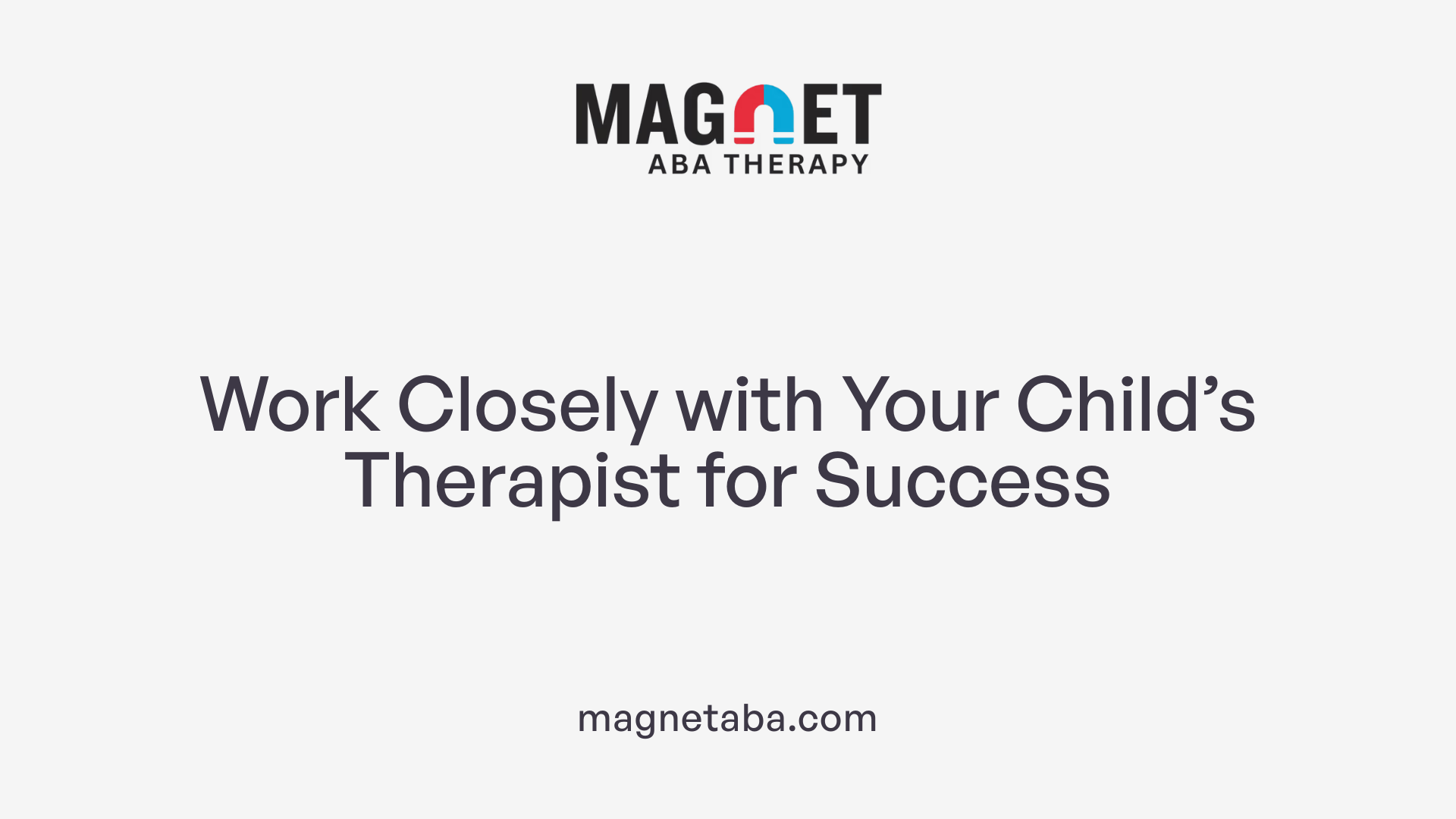 Sharing interests, triggers, and rewards
Sharing interests, triggers, and rewards
Effective collaboration with your child's therapist begins with open communication. Parents should share detailed information about their child's interests, favorite activities, and potential triggers. This helps tailor therapy activities to keep the child engaged and motivated. Understanding what reinforces positive behavior allows the therapist to incorporate preferred rewards, making sessions more enjoyable and productive.
Parent involvement and training
Parents play a vital role in the success of at-home ABA therapy. Participating actively in sessions by observing, practicing techniques, and taking notes reinforces learning outside of direct therapy time. Attending parent training sessions enables caregivers to understand strategies, prompting techniques, and how to implement consistent routines or visual supports. This builds confidence and ensures the skills learned during therapy are integrated into daily life.
Regular progress reviews
Consistent assessment of progress helps adjust goals and strategies effectively. Regular check-ins with the therapist allow families to discuss breakthroughs, challenges, and necessary modifications. Tracking data on skills and behaviors provides measurable insights, celebrating small milestones that motivate continued effort. These reviews also ensure the therapy plan remains relevant to the child's evolving needs.
What are best practices for involving the child and therapist in the home environment?
Best practices include setting up an organized, designated therapy space that is quiet, well-lit, and free from distractions. Parents should collaborate closely with the therapist, actively participating in sessions and reinforcing learned skills. Using visual supports like picture schedules and reward charts helps set clear expectations and track progress.
Incorporating routines, employing positive reinforcement, and engaging the child in naturalistic, play-based activities foster skill generalization and boost confidence. Regular communication, data collection, and ongoing training create a supportive environment where the child can develop new skills effectively and comfortably.
Create a Safe, Comfortable, and Stimulating Environment
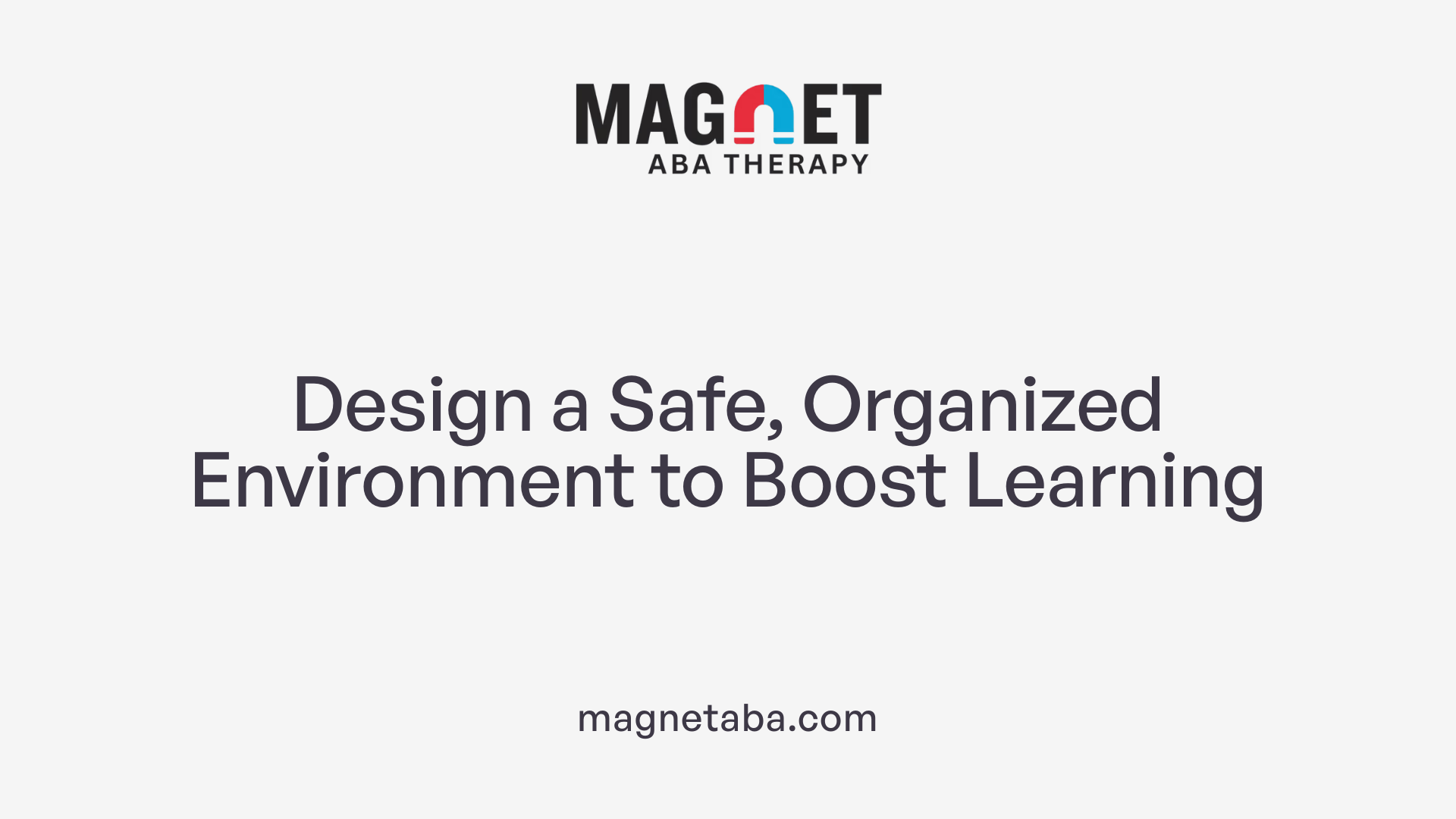
How can I create a safe and motivating space for ABA sessions?
Establishing a dedicated area in your home for ABA therapy helps your child associate that space with positive learning experiences. Choose a quiet, well-lit spot that is free from high traffic and distractions. Soft lighting and a comfortable temperature contribute to a calming atmosphere, making it easier for your child to focus.
Incorporate sensory tools like textured toys, fidget objects, or calming visuals to meet individual sensory needs. These tools can help soothe your child or stimulate their senses in a controlled way. Keeping toys, books, and learning aids organized and easily accessible minimizes interruptions during sessions.
Building familiarity between your child and the space fosters trust. Spend time casually visiting the area or introducing ABA activities with simple language to make the environment feel safe and inviting. Using visual supports such as schedules and social stories can reduce anxiety and set clear expectations.
Creating an engaging and uncluttered setting, supported by consistent routines and positive reinforcement, promotes motivation and focus. Communicating regularly with your therapist ensures the environment continues to meet your child's emotional and developmental needs.
By customizing the space to your child's preferences and needs and keeping it organized and welcoming, you can make ABA sessions more effective, enjoyable, and build a foundation for successful learning.
Monitor Progress and Adjust Strategies Regularly
 Understanding how to effectively monitor progress in ABA therapy is essential for making meaningful adjustments that support your child's development. Regular data collection involves tracking specific behaviors, skill acquisition, and responses to interventions. This can be done by observing your child during sessions or using simple charts and logs to record successes, challenges, and patterns.
Understanding how to effectively monitor progress in ABA therapy is essential for making meaningful adjustments that support your child's development. Regular data collection involves tracking specific behaviors, skill acquisition, and responses to interventions. This can be done by observing your child during sessions or using simple charts and logs to record successes, challenges, and patterns.
Skill checks are practical tools to assess whether your child is mastering targeted skills. These checks should be performed systematically, often with support from your ABA provider, to ensure that each step of a task is completed independently and correctly before progressing.
In addition to data collection, setting and reviewing goals regularly helps keep therapy focused and relevant. Collaborate with your child's therapist to update these goals based on ongoing assessments, ensuring they reflect your child's evolving needs and abilities.
Consistent monitoring provides insight into how your child responds to different methods and activities, guiding necessary adjustments. Celebrate small milestones to motivate your child and build confidence.
To facilitate accurate tracking, use visual supports like progress charts, reward systems, and checklists. These tools make it easier to see progress over time and maintain engagement.
Creating a detailed plan for ongoing assessment enhances therapy effectiveness. This includes scheduled reviews, data analysis, and consultation with professionals to refine approaches.
Implementing these strategies ensures that ABA therapy remains aligned with your child's growth, adjusting as needed to maximize positive outcomes.
| Monitoring Methods | Purpose | Tools and Techniques |
|---|---|---|
| Data collection | Track specific behaviors and responses | Charts, logs, apps |
| Skill checks | Evaluate mastery of skills | Structured activities, observation |
| Goal reviews | Keep therapy aligned with child's needs | Monthly meetings, progress reports |
| Visual supports | Aid data tracking and motivation | Charts, reward stickers, schedules |
| Adjustment strategies | Tailor approaches based on data | Therapy plan updates, activity modifications |
Incorporate Engaging Activities and Reinforcers
 Creating an inviting and stimulating environment is essential for effective ABA therapy at home. Incorporating play-based learning and sensory activities helps make learning fun and naturally encourages skill development.
Creating an inviting and stimulating environment is essential for effective ABA therapy at home. Incorporating play-based learning and sensory activities helps make learning fun and naturally encourages skill development.
Use toys, learning aids, and sensory play items that are safe and aligned with therapy goals. For example, engaging toys that promote communication, social interaction, and independence can motivate your child to participate actively.
Practicing communication through interactive play or picture-based activities supports language development. Visual supports like schedules and reward charts also help your child understand expectations and feel a sense of achievement.
Positive reinforcement is vital. Praising your child's efforts and offering small rewards encourages desired behaviors and keeps sessions engaging.
By combining these strategies, you'll promote a positive and productive atmosphere, fostering growth and learning through fun activities.
Promote Generalization and Maintenance of Skills
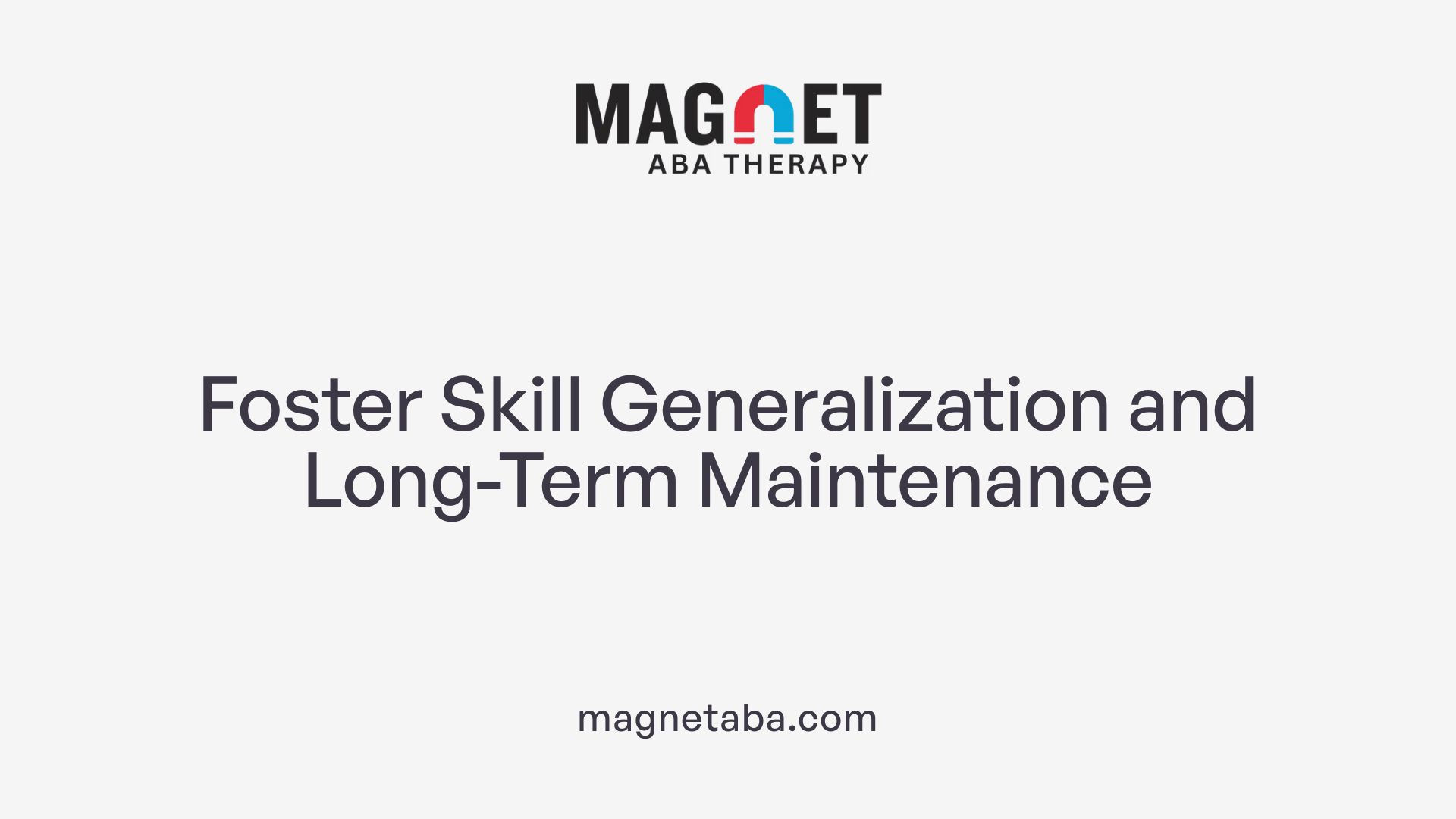 To help your child retain and use new skills across different settings, it’s important to focus on generalization and maintenance. Two effective methods for doing this at home are Natural Environment Teaching (NET) and embedding skills into daily routines.
To help your child retain and use new skills across different settings, it’s important to focus on generalization and maintenance. Two effective methods for doing this at home are Natural Environment Teaching (NET) and embedding skills into daily routines.
Natural Environment Teaching (NET) involves using everyday activities and surroundings to teach and reinforce skills. This approach makes learning more relevant and enjoyable for your child. For example, during meal times, you might encourage your child to request their favorite snack by using words or gestures they are learning. Incorporating skills into natural settings helps your child practice in real-life situations, increasing the likelihood that they will use these skills independently.
Embedding skills into daily routines means integrating learning into the activities your child already does. For instance, during dressing, you can practice following multi-step instructions or naming clothing items. When cleaning up toys, you can encourage counting or requesting help. Consistently reinforcing skills during routine activities helps them become part of your child's everyday life, making the learning stick.
Maintaining consistency by using visual supports, praise, and rewards during these natural teaching moments boosts motivation. Regularly reviewing and practicing skills across different contexts ensures they are maintained and generalized beyond therapy sessions.
Focusing on naturalistic teaching and embedding skills into daily routines helps your child transfer learned behaviors into various environments, supporting long-term success and independence.
Final Tips for Optimal ABA Home Setup
Setting up your home environment for ABA success requires thoughtful planning, organization, and collaboration. A dedicated, safe space combined with consistent routines, engaging activities, and open communication with your child's therapists creates a nurturing environment that fosters learning and development. Regularly assessing progress, making adjustments as needed, and involving the whole family ensure that therapy remains effective and integrated into daily life. By creating an inviting and structured setting, you empower your child to reach their full potential through consistent, motivating, and personalized ABA therapy.
References
- Home ABA Therapy: How to Help Your Child Get Ready
- How to Implement ABA Therapy at Home: A Parent's Guide
- Optimal ABA Therapy Home Setup Strategies
- In-Home ABA Therapy: Home Preparation Tips and Tricks
- Optimal ABA Therapy Home Setup Strategies
- 5 Ways to Prepare Your Home for In-Home ABA Therapy
- Autism Routines: Build a Structured Daily Schedule for ...
- How ABA Therapy Builds Consistency for Lasting Success

